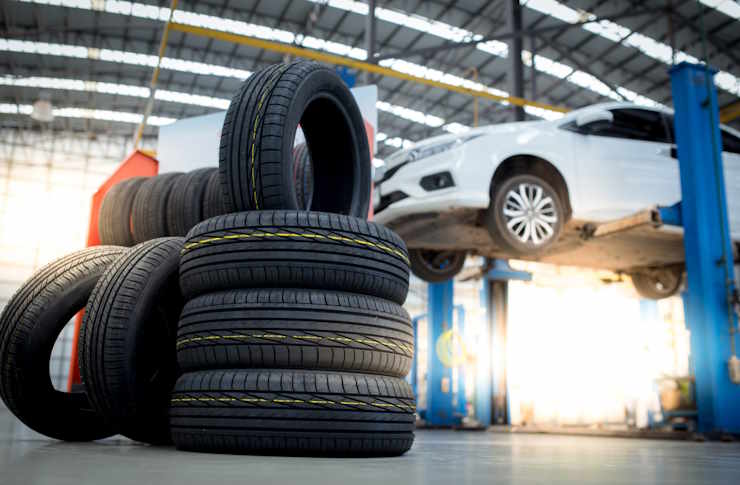All-Season Tires: A Good Choice for Any Weather
All-season tires are a versatile choice for drivers seeking reliable performance across various weather conditions. These tires offer a balance of features designed to handle dry, wet, and light winter conditions, making them a popular option for many vehicle owners.

What are All-Season Tires?
All-season tires are designed to provide adequate performance in a wide range of driving conditions. They combine elements of both summer and winter tires, offering a compromise that allows for year-round use in many climates. These tires typically feature a moderate tread depth and rubber compounds that remain flexible in cool temperatures while still providing good handling in warmer weather.
What are the Benefits of All-Season Tires?
All-season tires offer several advantages for drivers. Firstly, they provide consistent performance across various weather conditions, reducing the need for seasonal tire changes. This convenience can save time and money for many vehicle owners. Additionally, all-season tires often have a longer tread life compared to specialized summer or winter tires, as they’re designed for year-round use.
When Should You Use All-Season Tires?
All-season tires are best suited for regions with moderate climates that experience mild winters. They perform well in temperatures above 45°F (7°C) and can handle light snow. However, they may not provide optimal performance in extreme weather conditions, such as heavy snow or ice. Drivers in areas with severe winters may need to switch to dedicated winter tires during the coldest months for better safety and performance.
How Do All-Season Tires Perform in Different Weather?
In dry conditions, all-season tires offer good traction and handling, though they may not match the performance of dedicated summer tires. Wet weather performance is generally strong, with tread patterns designed to evacuate water and reduce the risk of hydroplaning. In light snow, all-season tires can provide adequate traction, but their performance decreases as snow depth increases or temperatures drop significantly below freezing.
What Should You Consider When Choosing All-Season Tires?
When selecting all-season tires, consider your driving habits, local climate, and vehicle type. Look for tires with good ratings in wet braking, dry handling, and tread life. Pay attention to the tire’s speed rating to ensure it matches your vehicle’s requirements. Some all-season tires are marketed as “all-weather” tires, which may offer improved performance in winter conditions while still providing year-round usability.
What is the Cost of All-Season Tires?
The cost of all-season tires can vary widely depending on the brand, size, and performance level. Generally, you can expect to pay anywhere from $50 to $300 per tire for passenger vehicles. Premium brands and larger sizes for SUVs or trucks may cost more. Here’s a comparison of some popular all-season tire options:
| Tire Model | Brand | Size | Estimated Cost per Tire |
|---|---|---|---|
| Michelin Defender T+H | Michelin | 205/55R16 | $135 - $150 |
| Goodyear Assurance All-Season | Goodyear | 205/55R16 | $100 - $120 |
| Continental TrueContact Tour | Continental | 205/55R16 | $110 - $130 |
| Bridgestone Ecopia EP422 Plus | Bridgestone | 205/55R16 | $120 - $140 |
| Firestone All Season | Firestone | 205/55R16 | $80 - $100 |
Prices, rates, or cost estimates mentioned in this article are based on the latest available information but may change over time. Independent research is advised before making financial decisions.
When considering the cost of all-season tires, factor in potential savings from not having to purchase and store separate sets of summer and winter tires. However, if you live in an area with extreme winters, the added safety of dedicated winter tires may outweigh the cost savings of using all-season tires year-round.
How Can You Care for Your All-Season Tires?
Proper maintenance can extend the life of your all-season tires and ensure optimal performance. Regularly check tire pressure and adjust it to the manufacturer’s recommended levels. Rotate your tires every 5,000 to 8,000 miles to promote even wear. Keep an eye on tread depth and replace tires when the tread reaches 2/32 of an inch. Avoid aggressive driving, which can lead to premature wear, and store your vehicle in a garage or use tire covers if it’s parked outside for extended periods to protect the rubber from UV damage.
All-season tires offer a convenient and cost-effective solution for many drivers, providing reliable performance across a range of conditions. By understanding their capabilities, costs, and care requirements, you can make an informed decision about whether all-season tires are the right choice for your vehicle and driving needs.
The shared information of this article is up-to-date as of the publishing date. For more up-to-date information, please conduct your own research.




